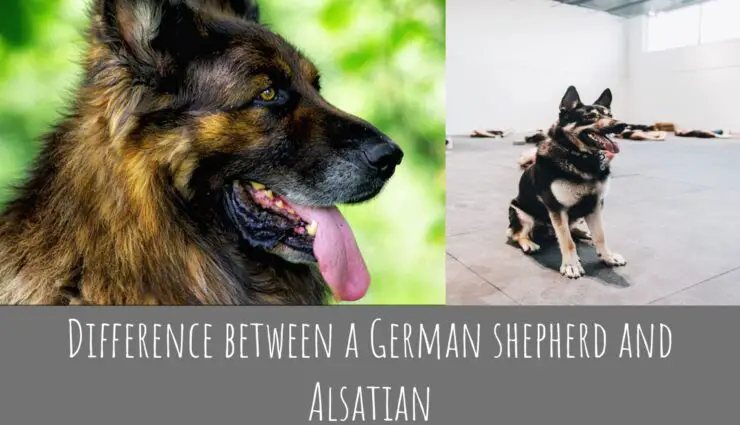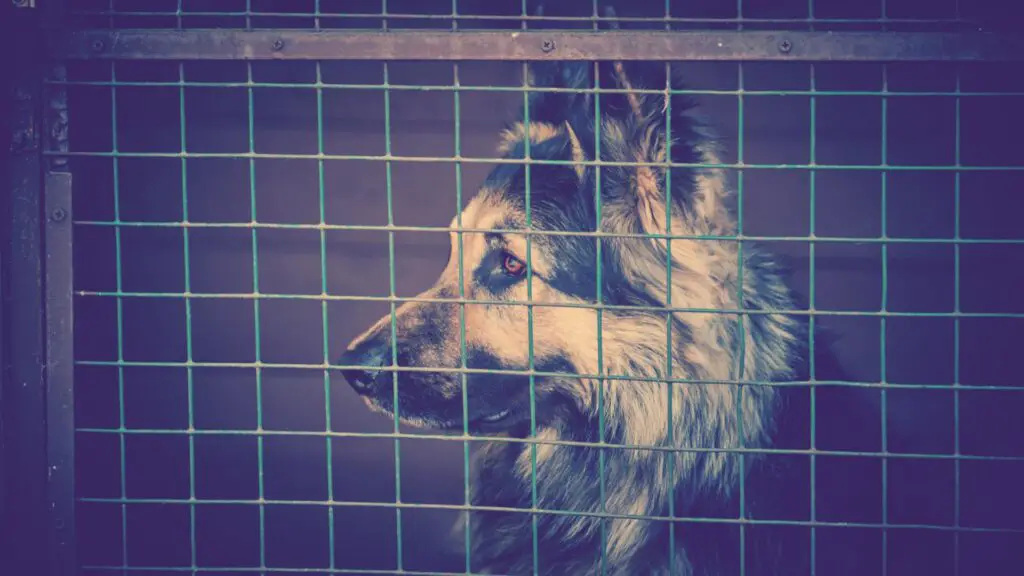This is a very common confusion among dog lovers worldwide – what is the difference between a German shepherd and Alsatian, whether the German Shepherd and the Alsatian are the same dogs or are different.
If you ask different people about this, I am sure you will get different answers.
One thing is for sure about them, no matter if they are the same or different, they are one of the best working dogs in the world.
Basically, as their name suggests, they are herding dogs, but they are champions of all kinds of tasks, from police work to military training, guiding the blind, search and rescue, and therapy dogs.
Furthermore, their loyalty and trainability is the essential characteristic of this breed.
But the question remains, they are different or the same. Although they look alike, so what is the truth? The answer is that they are the same dog of the same breed, but with a different name due to their origin.
In this article, we will talk in detail about the difference between a German Shepherd and Alsatian.
Difference Between a German Shepherd and Alsatian
This is a never-ending debate among dog lovers. Some claim that the German Shepherd and the Alsatian are as different as oranges and apples, and their breeding purpose is also different.
Some people will tell you differences about their structure, others will talk about their color, size, and even their place of origin, but the fact is that they are the same dogs with a different place of origin.
The German Shepherd originated in Germany, and the Alsatian originated in Alsace, France. To further clear up this confusion, let’s take a look at their history and see where the confusion began.
Also Read: Difference between male and female German Shepherds
History of German Shepherd
There was a time in Europe, around 1850, when the standardization of the canine breed was at its peak. Most people breed their dogs only to preserve the traits that help them protect their animals from predators.
At first, these practices were common in local communities in Germany, but with increasing popularity in 1891, Phylax society came into being.
The main goal of the Phylax Society was to standardize dog breeds across the country. Due to some conflicts between members of the society, the Phylax Society was banned after three years of operation.
The conflict between the members occurs because some member thinks that dogs are raised only for the sole purpose of working.
The remaining members believed that dogs are bred only for their appearance. Unfortunately, the Phylax Society was unable to unite its members, and each member began to standardize different breeds independently.
Among the members of the Phylax Society, there was a student from the Berlin veterinary faculty, Max von Stephanitz, who is also a former captain of Calvary.
He was one of the members who believed that the dog should be bred for the sole purpose of work.
Von Stephanitz, in 1899, went to a dog show and bought a dog named Horand von Grafrath. He noted that Horands has exceptional traits such as intelligence, strength, and loyalty. Above all, he is a perfect working dog.
“Verein für Deutsche Schäferhunde” was a society founded by Von Stephanitz for the purpose of preserving the German shepherd trait. The first registered German Shepherd in that society was Horand von Grafrath.
This breed was named German Shepherds because the sole purpose of this breed was to herd sheep and protect other animals on farms.
The German Shepherd faced many ups and downs in popularity until the 1920s. However, the greatest decline in popularity occurred during World War II, and that was due to anti-German sentiments.
A few years after World War II, the German Shepherd regained its fame, and in 2009 it was classified as the most popular breed of dog in the world.
History of Alsatian
During World War II, there were two groups that were made up of different allied countries.
One group had China, the United States, and Great Britain, and other allies were Italy, Germany, and Japan.
During that war, both sides used the German Shepherd as working dogs because, at that time, they were very popular with both sides.
Among those allies, Britain was the one that did not want to use the German shepherd name for its working dogs.
They want to do this because the Germans were their archenemy, and they don’t want to use anything that is related to Germany.
So they changed the name from German Shepherd to Alsatian; this is due to the Alsace-Lorraine area, a French-German border where British forces fought with German soldiers.
When the war ended, the Americans brought these German Shepherds to their country, but they don’t have any grudges towards the Germans, so they start using their original German shepherd name.
On the other hand, when Britain made peace with the Germans, they began to use the name German shepherd dog instead of Alsatian. Similarly, an ongoing campaign was launched in 1977 whose motto was to call Alsatians Dogs by their original name.
Interesting Read: German Shepherd Malamute Mix
Why German Shepherds are called Alsatian?
Many kennel clubs and countries called the German Shepherd Dog, the Alsatian, to avoid the word German due to anti-German sentiments.
Although Alsatian is another name of German shepherd dog, this new name became popular, and some people are beginning to think of it as a different breed of dog.
Today, in some areas, people still use Alsatian but remember that there is no difference between the two.
Regardless of what you call it a German Shepherd or Alsatian, this breed is one of the most popular dog breeds of the last few decades.
Physical Characteristic of German shepherds/Alsatian
The German Shepherd is a working dog with a medium to large-sized dog appearance, according to the American Kennel Club. Generally, they are between 22 “and 26″ at the withers with a height of 25”.
The male German Shepherd weighs between 30 and 40 kg and females between 22 and 32 kg.
The German Shepherd has a square-cut muzzle with a domed forehead and a black nose.
They have medium-sized eyes with an intelligent look. One of the main characteristics of the German Shepherd is its large erect ears that are open at the front.
There are a variety of colors in the German shepherd breed, but the most common are red, black, and tan black. The coat of the German Shepherd varies from single to double. Basically, the long-haired gene is recessive, which makes the long-haired variety rare.
The temperament of the German Shepherd is very different from other breeds; they need to work to be happy. They cannot sit idols in the corner of the house and do nothing.
They are always full of energy, confident and courageous dogs. They can work in different environments and can make excellent watchdogs, herding dogs, and working dogs. They have an average life span of 10.95 years.
Plus: German Shepherd Yorkie Mix
Different types of German Shepherd
These fierce and intelligent dogs are classified into two main types, “show line” and “working line.” You will be surprised by the fact that German Shepherds “show line” is divided into five different types.
The most common characters that separate different types of show lines are their coat and color. The coat can be differentiated according to the length of the hair. On the other hand, the working line is differentiated depending on their health and personality.
Different types of show line German shepherds
- Saddle Coat German Shepherd
- Panda German Shepherd
- Black German Shepherd
- White German Shepherd
- Sable German Shepherd
Different type of working line German shepherds
- Czech Working Lines
- The East German working lines
- The west German working lines
Final Verdict of Difference Between a German Shepherd and Alsatian
The Alsatians and the German Shepherd are the same dogs that got their different names due to their origins. However, this breed of dog is one of the versatile breeds in the world. Their ability to work, agility, and intelligence made them a great companion and working dog.





